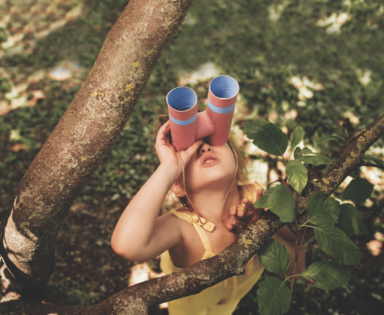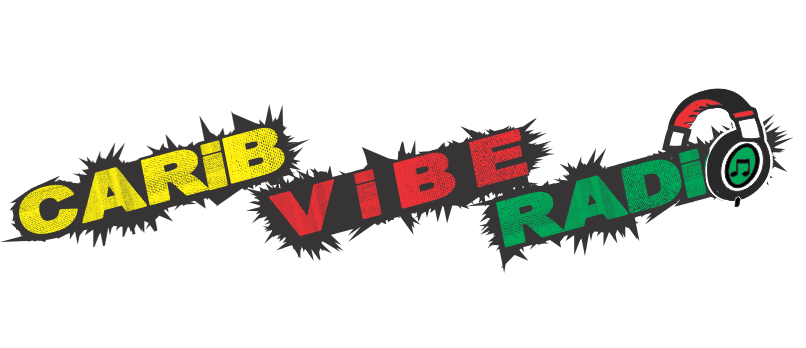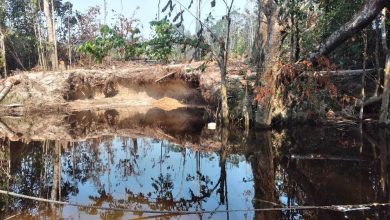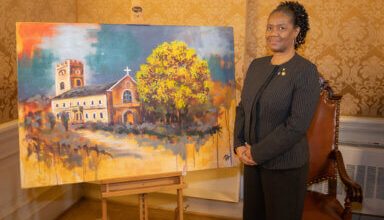Ultimate Guide to Birdwatching in NYC and Beyond

Ultimate Guide to Birdwatching in NYC and Beyond
(Additional reporting Kaitlyn Riggio & Serena Norr)
New Yorkers and tourists have been flocking to Central Park, hoping to get a glimpse of Flaco, the now-famous owl who flew from his enclosure at the Central Park Zoo in February. After zookeepers gave up their efforts to recover him, the free bird has become a sight to see in the wild. But did you know you can see equally majestic birds all throughout NYC? It’s true! There are so many places to enjoy birdwatching in NYC, including parks, shorelines, even your own backyard.
In celebration of birds, we did some research, spoke to several bird and nature experts and visited lots of local parks to create this guide to some of the best places to see birds in springtime and throughout the year in NYC.
The guide is broken down by borough, park and species, so you can take it with you on your next birding adventure. And whooo knows, you might even run into Flaco along your travels!
Birdwatching in NYC: A Fun Family Activity
Your Guide to Birdwatching in NYC
The Bronx
Manhattan
Queens
Brooklyn
Staten Island
Long Island
Westchester
Birdwatching in NYC: A Fun Family Activity
Birdwatching is a great way to get in touch with nature. It’s also an activity that everyone in the family can enjoy together.
“Anyone can bird,” Roslyn Rivas, public programs manager for NYC Audubon, said. “Just being connected with nature is such a positive thing for individuals, but to share it with someone else really can foster a sense of community. You can all learn together. And the more eyes you have when you’re birding, the more likely you’ll see birds.”
And birding in NYC can be very fun. Despite the Big Apple being a bustling metropolis, there are still lots of places to see nature, including birds. See, our city is located along the Atlantic Flyway, which is sort of like the I-95 highway for migratory birds. They fly from areas near and far all year long, especially during spring, so they need places to rest and refresh. (Whereas we humans like to stop at Starbucks or Applebee’s on long family road trips, migratory birds use New York City as one of their favorite rest stops!)
So, what is about NYC that’s so appealing to migratory birds? Basically, the habitat here is lush and diverse, providing ideal living quarters for so many traveling bird species.
“New York is so heavily urbanized but we have a lot of great green spaces,” Rivas said, adding that green roofs throughout the city also help provide habitat for birds.
In fact, Manhattan’s Jacob K. Javits Convention Center Green Roof is 6.75 acres and one of the largest in the country. It’s basically a wildlife sanctuary for lots of local and migratory birds. The center works with NYC Audubon to monitor and study the many birds that utilize the roof.
Over in Staten Island, which is also known as the borough of parks, habitat is diverse and plentiful for migrating birds, too.
“Staten Island is an extraordinary place to go birdwatching,” said Cliff Hagen, president of Protectors of Pine Oak Woods, an organization that works to save the borough’s natural heritage and open spaces. “If you were to go up 30,000 feet and look down at New York City, you have the Hudson River, Long Island Sound in Long Island, and it all converges on Staten Island. Hundreds of species of birds migrate through Staten Island as they’re going north and south every year. The topography of Staten Island lends itself to bird migration.”
Of course, not all birds are just passing through the city. Some live here all year long (these are called “resident birds”). NYC resident birds include bluejays, mourning doves, pigeons, mallards and many others that live in parks, your backyard, or really anywhere birds fly.
If you’re wondering if the migrant birds get along with the resident birds–for the most part, they do!
“The birds that are here all year round expect the visitors now,” Rivas explained. “Of course, whenever you have new individuals in any kind of environment, they’ll have competition for resources. The influx of new bird species makes it a bit harder for certain birds that are comfortable in their niches. But, that’s why it’s so important to preserve our green spaces so we can have enough habitat.”
Now, squabbles at backyard bird feeders—that might be a different story!
Your Guide to Birdwatching in NYC
Listed here are popular parks around the city for birdwatching. Keep in mind there are plenty more places to see birds, of course. Birders throughout the city have seen and identified the birds in this guide.
It’s important to mention that it’s never guaranteed that you’ll see any or all of these feathered friends when you’re birdwatching, but half the fun is in trying to spot them! To learn more about birdwatching, bird species and more, there’s so much information online. Some of our favorite sites include:
• Protectors of Pine Oak Woods: siprotectors.org
• NYC Audubon: nycaudubon.org
• NYC Parks: nycgovparks.org
Getty Images
Back to top
The Bronx
Bruckner Boulevard, Eastchester, Hutchinson
Let’s start up north in The Bronx’s Pelham Bay Park. This park is quite large. At three times the size of Central Park, Pelham Bay Park is the city’s largest park property. Designated an Important Bird Area by National Audubon, over 250 species have been recorded here.
Birds to look for include:
Spring: Black vulture, northern gannet, American woodcock, warblers and other songbirds, shorebirds
Summer: Clapper rail, wading birds, wild turkey
Fall: Raptor, shorebirds, kinglets, warblers, sparrows
Winter: Snow bunting, owls, accipiters, Canada goose, great blue heron, swan
Year-round: Peregrine falcon, great horned owl, merlin, red-tailed hawk, woodpeckers
Broadway, Jerome Avenue, City Line, Van Cortlandt Pk S
Continuing through The Bronx is another big park. At more than 1,000 acres, Van Cortlandt Park has lots of natural habitat that birds love.
Birds to look for include:
Spring: Warblers, tanagers, grosbeaks, swallows, waterfowl
Summer: Nesting wood duck, wild turkey, hairy woodpecker
Fall: Raptors, warblers, American pipit, sparrows
Winter: Owls, accipiters
Year-round: Great horned owl, red-tailed hawk, woodpeckers
2900 Southern Blvd.
In addition to seeing beautiful plants and flowers, you can see birds here too. The property’s diverse habitats have attracted a reported 229 bird species and make it a migrant bird hotspot!
Birds to look for include:
Spring: Warblers, tanagers, grosbeaks, orioles and other songbirds
Summer: Nesting wood duck, green heron, red-tail hawk, ruby-throated hummingbird
Fall: Raptors, ruby-throated hummingbird, warblers, sparrows
Winter: Owls, woodpeckers, rusty blackbird, mixed songbird feeding flocks
Year-round: Resident wood ducks, red-tailed hawks
Back to top
Manhattan
Fifth Avenue to Central Park W., 59 Street to 110 Street
As busy and bustling as Manhattan is, the city’s geographically smallest borough offers lots of opportunities for Birdwatching in NYC. One of the most famous parks in the world, Central Park provides habitat for lots of migratory birds. On a side note: Have your camera ready, because there are lots of Instagram opportunities located throughout this iconic park!
Birds to look for include:
Spring: Flycatchers, cuckoos, warblers, vireos, kinglets, tanagers, grosbeaks, wading birds and waterfowl, freshwater sandpipers
Summer: Nesting red-tailed hawk, Baltimore oriole, foraging wading birds
Fall: Warblers, thrushes, sparrows, raptors
Winter: Mixed songbird flocks, owls, accipiters, wintering waterfowl and gulls
Year-round: Red-tailed hawk, Peregrine falcon, common woodpeckers
Dyckman Street, Hudson River, Harlem River S.
Located at the northern tip of Manhattan, Inwood Hill Park’s oak and tulip poplar forests attract lots of songbirds during migration. Grab your binoculars, take in the park’s gorgeous views, and look for lots of different colorful birds.
Birds to look for include:
Spring: Wild turkey, rusty blackbird, warblers and other songbirds, American woodcock, shorebirds
Summer: Louisiana waterthrush, green heron, orchard and Baltimore orioles, red-tailed hawk, warbling vireos, hairy woodpecker
Fall: Northern harrier, raptors, shorebirds, kinglets, warblers, sparrows
Winter: Owls, accipiters, mixed songbird feeding flocks
Year-round: Red-tailed hawk, gulls, woodpeckers
Accessible by ferry from Lower Manhattan
Located right in the middle of the New York Harbor, Governors Island serves as a great resting spot for migrant birds.
Birds to look for include:
Spring: Owls, gulls, woodpeckers, flycatchers, warblers, tanagers, orioles, and grassland birds
Summer: Black skimmer, purple martin, nesting common tern, herring and great black-backed gulls, fish crow, eastern kingbird
Fall: Raptors, freshwater sandpipers, woodpeckers, flycatchers, grassland birds, warblers, and other songbirds
Winter: Owls, accipiters, diving birds, songbird feeding flocks
Year-round: Gulls, red-tailed hawk, American kestrel, fish crow
Back to top
Queens
This beautiful natural area, part of the National Park Service, is a marshy estuary shared by Queens and Brooklyn. It’s a very important stopover site for migrating shorebirds.
Birds to look for include:
Spring: Shorebirds, wading birds, terns, orchard oriole, rusty blackbird, courting American woodcock, flycatchers, cuckoos, warblers, and tanagers
Summer: Nesting willet, American oystercatcher, clapper rail, osprey, ruby-throated hummingbird
Fall: Shorebirds, wading birds, raptors, flycatchers
Winter: American crow, rock pigeon, wintering waterfowl, accipiters, northern harrier
Year-round: Peregrine falcon, barn owl, great horned owl, bald eagle
Little Neck Bay to Springfield Boulevard, Union Turnpike
In the northeast corner of Queens is Alley Pond Park, which features several different habitats, including tidal marsh, oak and beech forest, and freshwater wetlands that drain into Little Neck Bay to the north. The forest and meadows here are great spots for birdwatching.
Birds to look for include:
Spring: Flycatchers, vireos, warblers, tanagers, grosbeaks and other songbirds, American woodcock, shorebirds, waders
Summer: Nesting osprey, foraging wading birds
Fall: Raptors, shorebirds, ruby-throated hummingbird, kinglets, thrushes, warblers, sparrows
Winter: Woodpeckers, American crow, ducks, owls, accipiters, sparrows and songbirds
Year-round: Great horned owl, red-tailed hawk, woodpeckers, belted kingfisher
Grand Central Parkway, Van Wyck Expressway
In the heart of bustling Queens and surrounded by major highways with rushing city traffic, Flushing Meadows Corona Park is a classic urban park that offers some great spots for birdwatching!
Birds to look for include:
Spring: Waterfowl, freshwater shorebirds, and terns; warblers, sparrows, and other land birds
Summer: Foraging common and Forster’s terns, egrets, osprey, chimney swift, nesting eastern kingbird, warbling vireo
Fall: Waterfowl, freshwater shorebirds, wading birds, warblers, kinglets, and other songbirds
Winter: Waterfowl, accipiters, sparrow feeding flocks
Year-round: Red-tailed hawk, bald eagle, great blue heron, black-crowned night-heron, gulls, killdeer, waterfowl
Great Horned Owl, Getty Images
Myrtle Avenue, Union Turnpike, Park Lane S.
Enjoy a peaceful birdwatching experience at this Queens park.
Birds to look for include:
Spring: Flycatchers, cuckoos, warblers, thrushes, tanagers, orioles, grosbeaks, and other songbirds, waders and possible freshwater waterfowl and shorebirds
Summer: Possible nesting species, waders
Fall: Flycatchers, kinglets, thrushes, warblers, sparrows, possible rusty blackbird; waders, waterfowl
Winter: Accipiters, owls, yellow-bellied sapsucker, winter wren, mixed songbird feeding flocks, sparrows
Year-round: Red-tailed hawk, woodpeckers, white-breasted nuthatch, black-capped chickadee, Carolina wren, waterfowl
ILLUSTRATION
Beach 3 to Beach 153 Streets and Boardwa lk to Atlantic Ocean
The Rockaway beaches are great to visit in the summer, or any time of year. The area is home to important nesting sites for many threatened bird species. The waters on both bay and beach side attract lots of wintering sea birds, too.
Birds to look for include:
Spring: Lingering waterfowl, northern gannet, shorebirds, flycatchers, thrushes, warblers, tanagers, and other land birds
Summer: Beach-nesting black skimmers, common and least terns, American oystercatchers, and piping plovers; osprey, migrating shorebirds
Fall: Accipiters, falcons, buteos, shorebirds, warblers, thrushes, sparrows
Winter: Wintering sea ducks, grebes and loons, northern gannet, pelagic birds, purple sandpiper
Year-round: Peregrine falcon, gulls
Back to top
Brooklyn
Floyd Bennett Field is one of the best places in NYC to see gorgeous snowy owls with their striking white plumage. And they make quite a trip to the city, all the way from the Arctic Circle! (They often come here when their food sources run low up north.)
Birds to look for include:
Spring: Flycatchers, purple martin, black-billed cuckoo, warblers and other songbirds; lingering waterfowl, American Woodcock
Summer: Nesting American woodcock, killdeer, willet, great crested flycatcher, eastern kingbird, willow flycatcher, white-eyed vireo, tree swallow, cedar waxwing, yellow warbler, American redstart, Baltimore and orchard oriole
Fall: Raptors, warblers, thrushes, sparrows
Winter: Snowy owl, horned lark, snow buntings, lapland longspurs, loons, ducks
Year-round: Peregrine falcon, grassland birds, sparrows, great horned owl, American kestrel, northern harrier
Prospect Park and Brooklyn Botanic Garden
You can spend a whole day exploring these two Brooklyn venues. The diverse habitat of woodlands, gardens, meadows, lakes and streams here is attractive to migrating birds during spring and fall. Birders have recorded 289 species in Prospect Park, which has been designated an Important Bird Area by National Audubon.
Birds to look for include:
Spring: Flycatchers, cuckoos, warblers, tanagers, orioles, grosbeaks, and other songbirds
Summer: Nesting species including possible green heron, Cooper’s hawk, Acadian flycatcher
Fall: Raptors, kinglets, warblers, sparrows
Winter: Waterfowl, accipiters, owls, songbirds
Year-round: Peregrine falcon, great horned owl, merlin, red-tailed hawk, woodpeckers
500 25th St.
This National Historic Landmark in Brooklyn is another green space that’s popular with both birds and birders. The beautiful cemetery is well known for the monk parakeets that nest upon its gates, but many other species live here, too.
Birds to look for include:
Spring: Flycatchers, cuckoos, warblers, tanagers, orioles, grosbeaks, and other songbirds; spotted and solitary sandpiper
Summer: Eastern kingbird, warbling vireo, cedar waxwing, Baltimore oriole, wading birds
Fall: Raptors; warblers, kinglets, thrushes, and other songbirds
Winter: Accipiters, owls, mixed songbird feeding flocks, waterfowl
Year-round: Monk parakeets, red tailed hawk, woodpeckers, wood duck, belted kingfisher
950 Fountain Ave.
This beautiful state park is named in honor of Brooklyn-born Shirley Chisholm, who was the first African American Congresswoman. The park offers biking, fishing, hiking, and of course, lots of opportunities for bird watching!
Birds to look for include:
Spring: Black skimmer, blue heron, Baltimore oriole, Louisiana waterthrush, house wren
Summer: Willow flycatcher, Forster’s tern, osprey, herons
Fall: Shorebirds, wading birds, raptors, flycatchers
Winter: Waterfowl including swan, accipiters, short-eared owl, snow buntings,
horned larks
Year-round: Peregrine falcon, northern harrier, American kestrel, gulls
Flatbush, Gerritsen and Fillmore Avenues, Jamaica Bay
This 530-acre park offers lots of opportunities for birdwatching.
Birds to look for include:
Spring: Flycatchers, cuckoos, warblers, tanagers, orioles, grosbeaks, and other songbirds; shorebirds, wading birds
Summer: Nesting killdeer, willet, clapper rail, osprey, willow flycatcher, cedar waxwing, yellow warbler, common yellowthroat, boat-tailed grackle
Fall: Shorebirds, wading birds, raptors, flycatchers, songbirds
Winter: Waterfowl, American crow, downy woodpecker, accipiters, northern harrier, songbirds
Year-round: Peregrine falcon, red-tailed hawk, American kestrel; gulls
Back to top
Staten Island
Staten Island’s South Shore, Hylan Boulevard
This sprawling natural area encapsulates many different kinds of habitat, including beach, forests, wetlands and more, all of which supply everything local wildlife and plants need to survive. Plus, there’s easy parking and cleared paths to walk along during your birdwatching adventure.
Birds to look for include:
Spring: Herons, woodpeckers, eastern screech owl, northern gannet, American oystercatcher, sparrows, common merganser
Summer: Wading birds, gulls, terns, American oystercatcher, osprey, shorebirds, killdeer, eastern kingbird, orchard and Baltimore oriole, indigo bunting, cedar waxwing, swallows, brown thrasher
Fall: Shorebirds, raptors, warblers, thrushes, sparrows and other songbirds
Winter: Waterfowl, gulls, alcids, northern gannet
Year-round: Bald eagle, waterfowl, gulls
Staten Island’s South Shore, Hylan Boulevard
Part of the Staten Island unit of Gateway National Recreation Area, this park is 523 acres and great for birdwatching.
Birds to look for include:
Spring: Shorebirds, waders, northern gannet, warblers and other land birds
Summer: Wading birds, gulls, terns, American oystercatcher, osprey, migrating shorebirds, nesting killdeer, fish crow, swallows, yellow warbler, cedar waxwing, orchard and Baltimore oriole, boat-tailed grackle
Fall: Shorebirds, raptors, warblers, sparrows and other songbirds
Winter: Hairy woodpecker, waterfowl, gulls, alcids, purple sandpiper, northern gannet, yellow-rumped warbler
Year-round: Bald eagle, gulls
Psst…25 Spring NYC Bucket List for Families 2023
7455 Hylan Blvd.
Located at the southernmost tip of Staten Island–not to mention the southernmost tip of NYC- is Conference House Park. This waterside park, where the Arthur Kill joins Raritan Bay, has dunes, beaches, wetlands, meadows and wooded bluffs that birds love.
Birds to look for include:
Spring: Shorebirds, waders, northern gannet, flycatchers, vireos, thrushes, warblers, tanagers and other land birds
Summer: Wading birds, gulls, terns, American oystercatcher, osprey, shorebirds, orchard and Baltimore orioles
Fall: Shorebirds, raptors, chimney swift, land birds
Winter: Hairy woodpecker, waterfowl, wild turkey, gulls, alcids, purple sandpiper, northern gannet, sparrows
Year-round: Bald eagle, gulls, woodpeckers, songbirds
Forest Avenue, Victory Boulevard bet. Clove Road and Brookside Avenue, Royal Oak Road
This city park is a protected Forever Wild site because of its ecologically valuable lands. Staten Island families flock to Clove Lakes Park to enjoy many outdoor activities, including birdwatching.
Birds to look for include:
Spring: Warblers, songbirds, bank swallow, grosbeak, orchard oriole
Summer: Egrets, great blue heron, green heron, Baltimore oriole, Cooper’s hawk
Fall: Kinglets, raptors, sparrows
Winter: Waterfowl, accipiters, owls, songbirds
Year-round: Owls, red-tail hawk, woodpeckers
Illustration of a familiar bird sparrow, Getty Images
700 Rockland Ave.
The Greenbelt is a major attraction for Staten Islanders. It’s a nature lover’s delight, and there are plenty of outdoor activities for families to enjoy, including birdwatching.
Birds to look for include:
Spring: Waterbirds, thrushes, kinglets, warblers, tanagers, orioles, grosbeaks
Summer: Lots of forest birds, wading birds
Fall: Kinglets, warblers, sparrows, raptors
Winter: Waterfowl, accipiters, songbirds
Year-round: Turkey vulture, red-tail hawk, owls, woodpeckers
The Staten Island Turkeys
These gorgeous birds live all over the island, but their headquarters seem to be in the borough’s Dongan Hills-Old Town neighborhoods. You never know when or where you’ll encounter them!
Back to top
Long Island
600 Robert Moses State Parkway, Babylon, NY
Located on the western end of Fire Island, Robert Moses State Park is a 875-acre state park home to over 300 species of birds. Fire Island is designated as an important bird area by the New York Audubon Society, and you can explore birds on the park’s five-mile stretch of beach.
Birds to look for include:
Spring: terns, brants, Canada geese
Summer: osprey, barn swallow, loons
Fall: Merlin, kinglets, warblers
Winter: horned lark, snow bunting, white-throated sparrow
Year-round: gulls, northern mockingbird, American kestrel, sandpipers
Theodore Roosevelt Sanctuary & Audubon Center
134 Cove Road, Oyster Bay, NY
Oyster Bay’s Theodore Roosevelt Sanctuary & Audubon Center, celebrating its 100th anniversary this year, was the first songbird sanctuary established by the National Audubon Society. The center’s 14 acres are perfect for hiking, research and, of course, birdwatching.
Birds to look for include: hawks, owls, falcons, songbirds
2400 Ocean Parkway, Wantagh, NY
Explore seabirds on the world-famous Jones Beach State Park’s 6.5 miles of beach on the Atlantic Ocean. There are over 300 species of birds to look for throughout the State Park.
Birds to look for include:
Spring: Red-winged Blackbird, grackles, brant
Summer: plovers, sandpipers, Willow Flycatcher
Fall: Belted Kingfisher, Northern Flicker, woodpeckers
Winter: loons, kinglets, owls
Year-round: Canada geese, American oystercatcher, Mute Swan
This easternmost point on Long Island is a huge hotspot for waterfowl, sea ducks and other seabirds. Designated as an Important Bird Area by the National Audubon Society, visitors can see hundreds of species of birds during their visit.
Birds to look for include:
Spring: Black-capped Chickadee, Northern Gannet, Horned Grebe
Summer: American Goldfinch, sandpipers, terns
Fall: Yellow-rumped Warbler, Northern Flicker, Black-capped Chickadee
Winter: Razorbill, scoters, eiders, ducks
Year-round: gulls, Song Sparrow, Canada geese
Wertheim National Wildlife Refuge (Near Manorville)
Looking for a change of pace from birding on the beach? Head to the Pine Barrens! You’ll find a wide variety of bird species throughout the forest. There’s over 100,000 acres for you to explore.
Birds to look for include:
Spring: Ring-necked Duck, mallards, Field Sparrow
Summer: Pine Warbler, Yellow-billed Cuckoo, Eastern Kingbird
Fall: Great Blue Heron, Golden-crowned Kinglet, Dark-eyed Junco
Winter: Hooded Merganser, Eastern Bluebird, Short-eared Owl
Year-round: hawks, woodpeckers, Canada geese
Back to top
Westchester
Croton-On-Hudson, NY 10520
Located in the beautiful Hudson River, this 508-acre park offers incredible access to view birds. Its location on the river makes it an ideal spot to locate bald eagles who use the area for breeding. Over 250 species of birds have been spotted here.
Birds to look for include:
Spring: Great-horned owls, vesper sparrow, eastern screech owls
Summer: Bobolink, grasshopper sparrows
Fall: Song, savannah, white-throated, snow bunting, lapland longspur
Winter: Bald eagles, owls, American kestrel, Northern harrier, scaup, common merganser, common goldeneye, bufflehead.
Edith G. Read Natural Park and Wildlife Sanctuary
1 Playland Pkwy, Rye, NY 10580
This 179-acre wildlife sanctuary offers access to the shoreline on Long Island Sound, Manursing Lake, wetlands, and numerous trails. It is designated as an “important bird area” by the Audubon Society of New York where you will find numerous nature exhibits, a bird viewing window, and the home of 5,000 ducks. Nearby Rye beach also offers incredible views for bird watching.
Birds to look for include:
Spring: Migrating scooters, northern gannet.
Summer: Great blue herons, loons, bank swallow, lesser yellowlegs.
Fall: Bay-breasted warbler, black vulture, chimney swift, ruby-throated hummingbird.
Winter: Greater and lesser scaup, canvasback, American wigeon, black duck.
Year-round: Snow bunting, snowy owl, barrow’s goldeneye, red-necked grebe, eared grebe
220 Boston Post Rd, Rye, NY 10580
This 150-acre preserve is the only extensive salt water marsh in Westchester where 300 species have been discovered in its marshes and mudflats. This includes the home of five ecological habitats and is deemed a critical habitat and biodiversity reserve. Dogs are not permitted.
Birds to look for include:
Spring: Wild turkeys (late spring), vesper sparrow, Cape May warbler
Summer: Yellow-breasted chats, eastern kingbird, cerulean warbler
Fall: Black skimmer, prairie warbler, tree swallow
Winter: Yellow-breasted chats, bald eagle, American woodcock, bufflehead, wild turkey.
Year-round: Shorebirds, waders, rails, marsh wren, salt marsh, wren, seaside sparrow.




